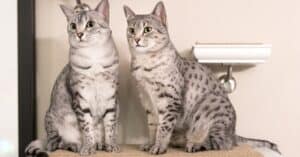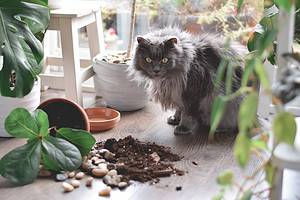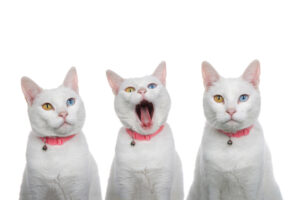Have you ever seen an “odd-eyed” cat? Domestic cats with two different color eyes have the feline form of heterochromia iridum. This phenomenon appears in other domesticated animals, including dogs and horses, and humans too! Read on to find out more about heterochromia in domestic cats.
What Is Heterochromia Iridium?
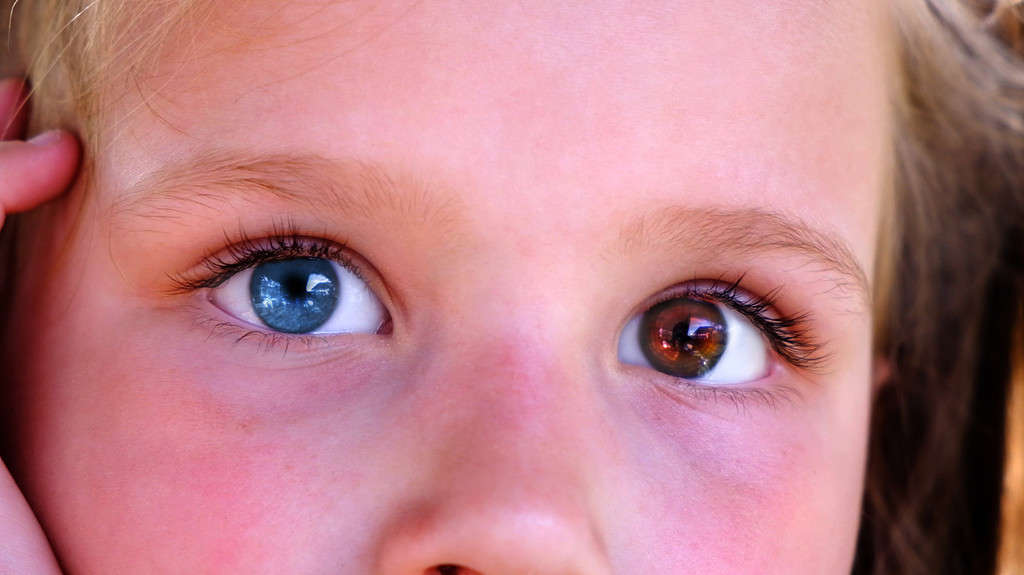
Heterochromia appears most often in domesticated animals, such as dogs, cats, and horses.
©Elena Kurkutova/iStock via Getty Images
Heterochromia means a variation in coloration. While most use the term to describe differences in eye color, it may also be used for differences in hair and skin color. Heterochromia iridium is the full technical term used to specify the color differences of the iris.
Differences in the production, deposition, and concentration of melanin pigments cause heterochromia. Both inherited genes and genetic mutations can cause heterochromia. Additionally, it may also develop after certain diseases or injuries. While heterochromia is possible in any animal with melanin pigments in the iris, it is most often documented in humans and certain breeds of domesticated animals.
Types of Heterochromia Iridium
Heterochromia iridium can be either complete, with a different solid color in each eye, or incomplete, with different colors within a single eye. Incomplete heterochromia can further be divided into sectoral or centralized, depending on the arrangement of the colors.
Complete Heterochromia
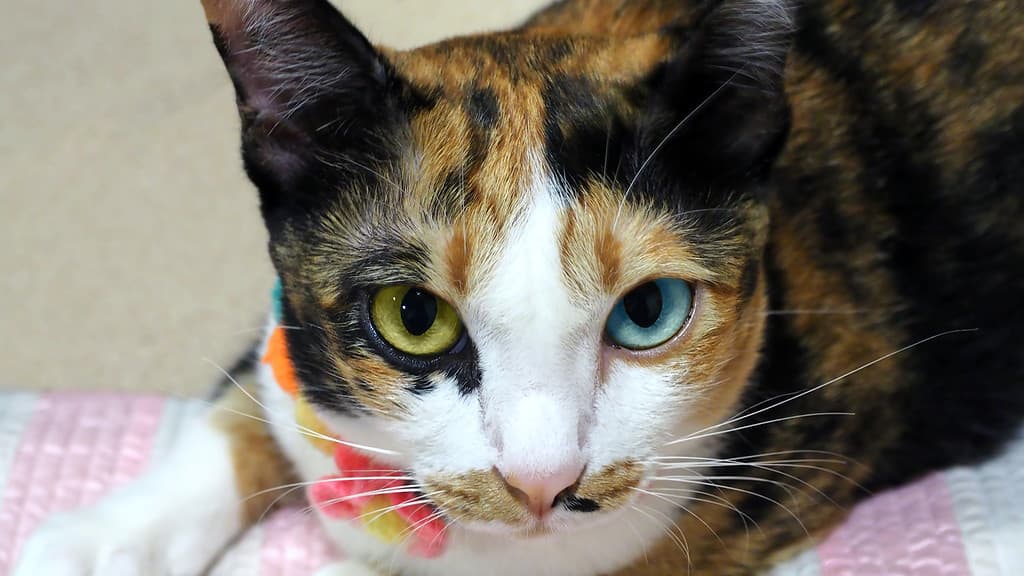
This cat has complete heterochromia.
©Sukanin Promkatkeaw/iStock via Getty Images
In complete heterochromia, each iris is a different color. This is the most commonly observed form of heterochromia iridium.
Sectoral Heterochromia
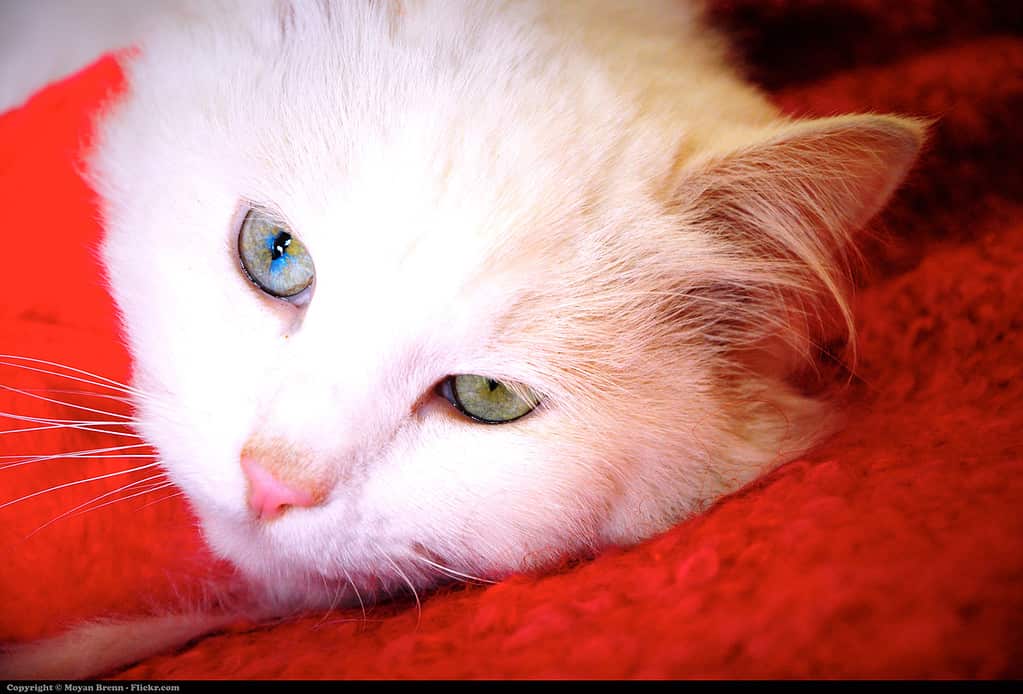
This cat has sectoral heterochromia in one eye.
©Moyan Brenn from Italy / CC BY 2.0 – License
In sectoral heterochromia, there are two different colors in the same iris, with the odd patch(es) delineated in a radial (sectoral) manner. It may be present in one or both eyes.
Central Heterochromia
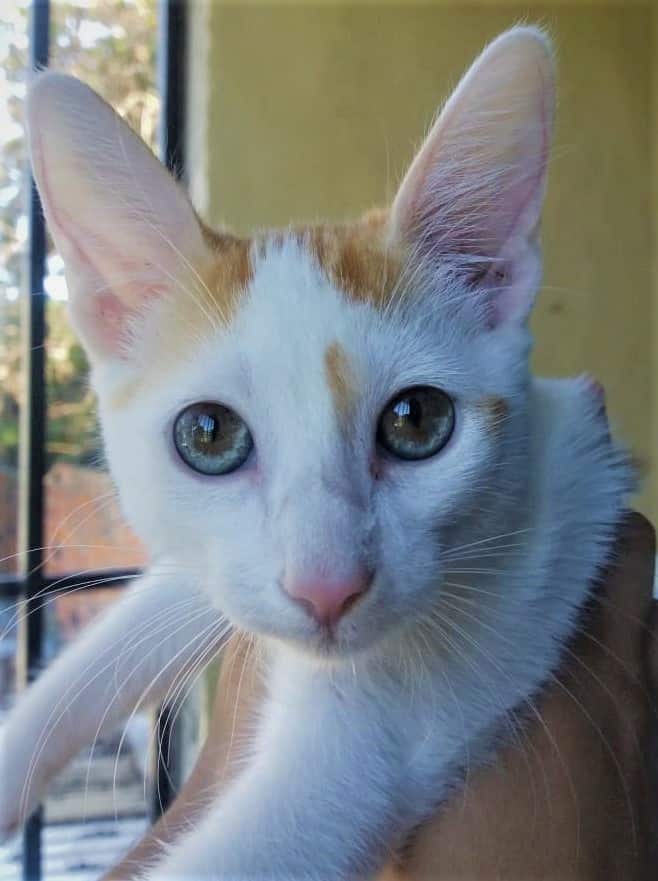
This cat has central heterochromia in both eyes.
©Paparazzzi / CC BY-SA 4.0 – License
In central heterochromia, there are two different colors in the same iris. They feature concentric arrangements either as a ring around or spikes radiating from the pupil. It may be present in one or both eyes.
Heterochromia in Domestic Cats
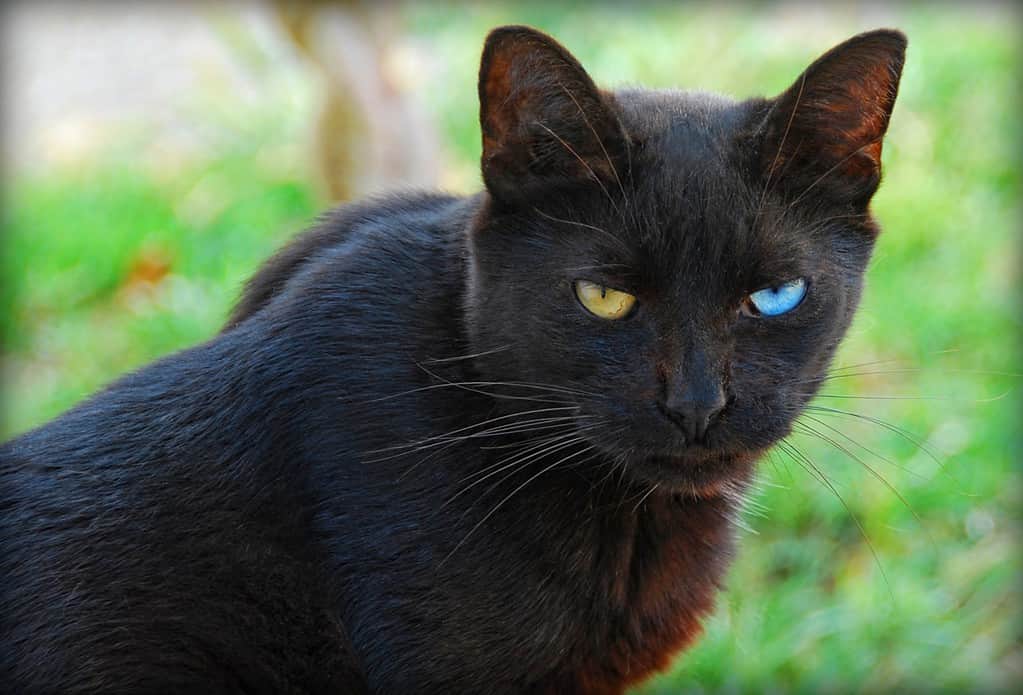
Yes, black cats can have heterochromia, too!
©Chris Yarzab / CC BY 2.0 – License
Heterochromia is more likely to occur in domestic cats with either all-white or bi-color coats. This is because the same genes and mutations that inhibit melanin in the fur (dominant white and white spotting genes, albinism, etc.) can also act upon the eyes. However, as noted above, other genetics and conditions can cause heterochromia as well, for example, in cats with a dominant blue-eye gene or a condition such as genetic mosaicism or chimerism. Therefore, any domestic cat breed of any coat color can potentially develop heterochromia. Of course, there are some breeds in which the condition is a more commonly encountered trait, even written into the standards of several breeds.
Most Common Domestic Cats with Odd-Eyed Varieties
Standardized breeds for which the Cat Fancier’s Association (CFA) notes odd eyes may be present include the following:
- American Bobtail
- American Shorthair
- British Shorthair
- Cornish Rex
- Exotic
- Japanese Bobtail
- Khao Manee
- LaPerm
- Manx
- Maine Coon Cat
- Norwegian Forest Cat
- Oriental
- Persian
- Ragamuffin
- Scottish Fold
- Siberian
- Toybob
- Turkish Angora
- Turkish Van
Additionally, heterochromia is a hallmark trait of at least one natural breed, the Van Cat. These are the most famous and popular odd-eyed cats:
The Van Cat
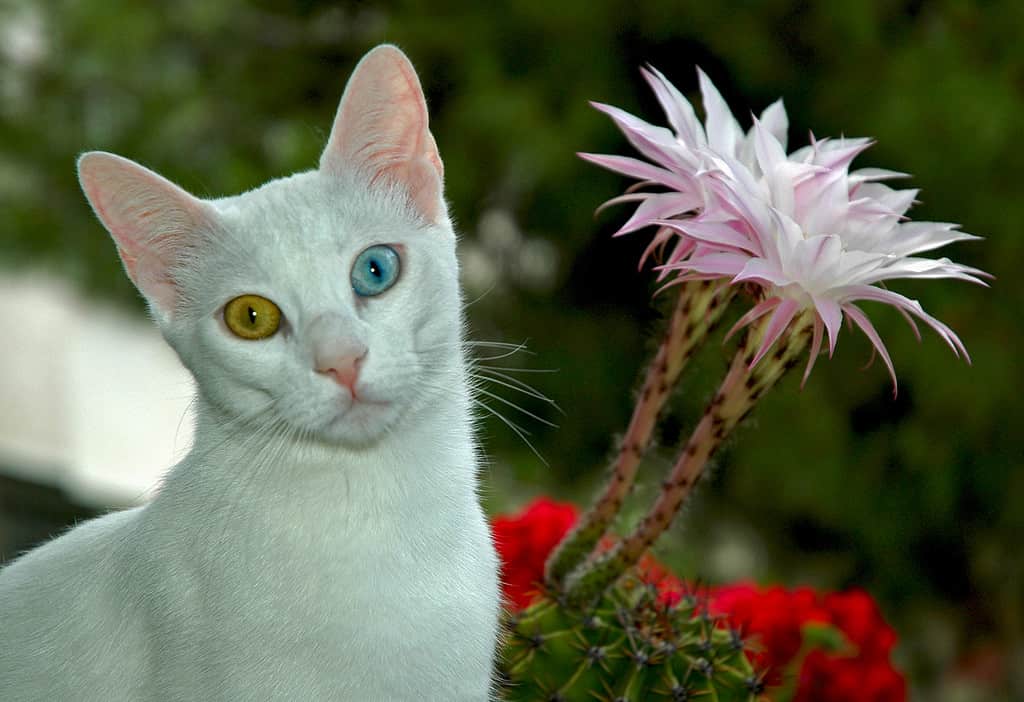
Van Cats are also called “swimming cats” as they are known to swim in the waters of Lake Van.
©undefined undefined/iStock via Getty Images
The Van Cat is a traditional landrace (a naturally occurring variety rather than a standardized breed) native to the Lake Van region in eastern Türkiye. These cats have white coats and blue or amber eyes, with the odd-eyed trait a common and revered characteristic.
Turkish Van
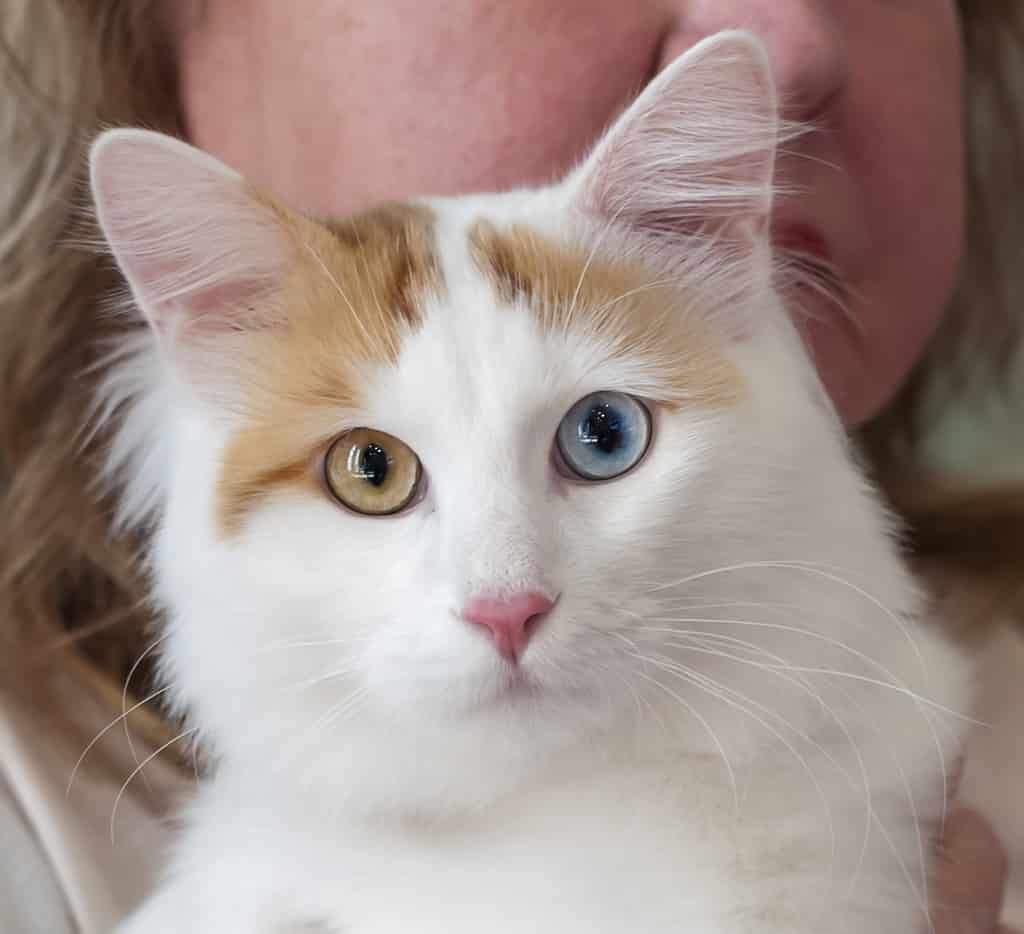
The Turkish Van is a semi-long-haired, standardized breed first developed in the U.K. from Turkish stock.
©Heikki Siltala / CC BY 3.0 – License
The Turkish Van breed standard lists eye colors as “amber, blue, and odd-eyed” (one of each).
Turkish Angora
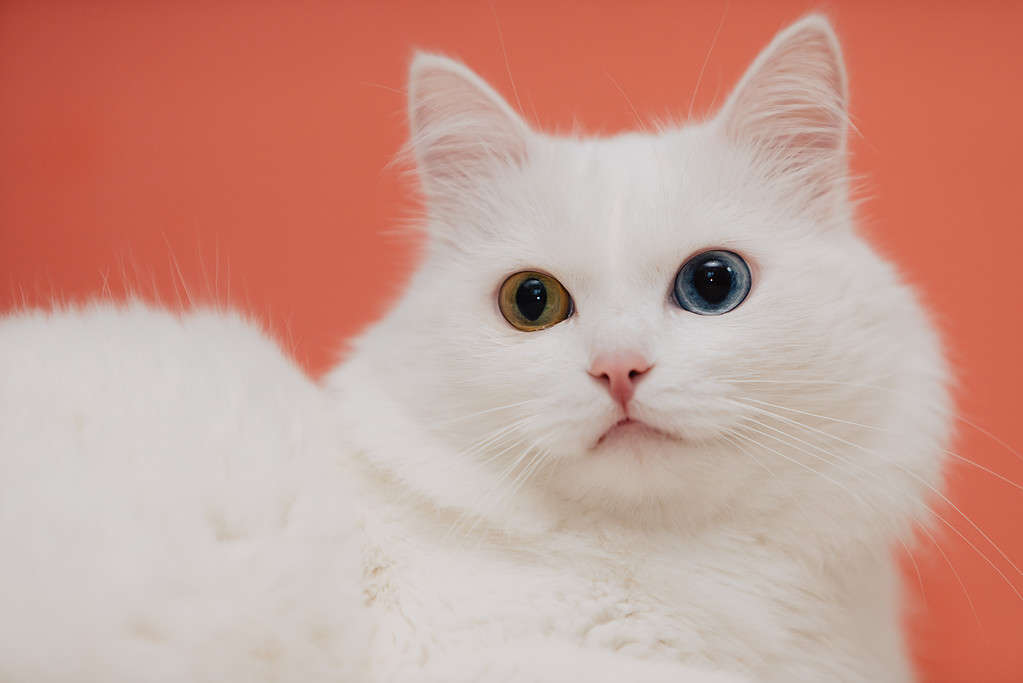
The
Turkish Angora
is an ancient, natural breed originating from central Anatolia.
©Svyatoslav Balan/iStock via Getty Images
The Turkish Angora breed standard lists acceptable eye colors as blue, green-gold, amber, and odd-eyed, “with one blue eye and the other green, green-gold or amber” and “similar depth of color in both eyes.”
Persian
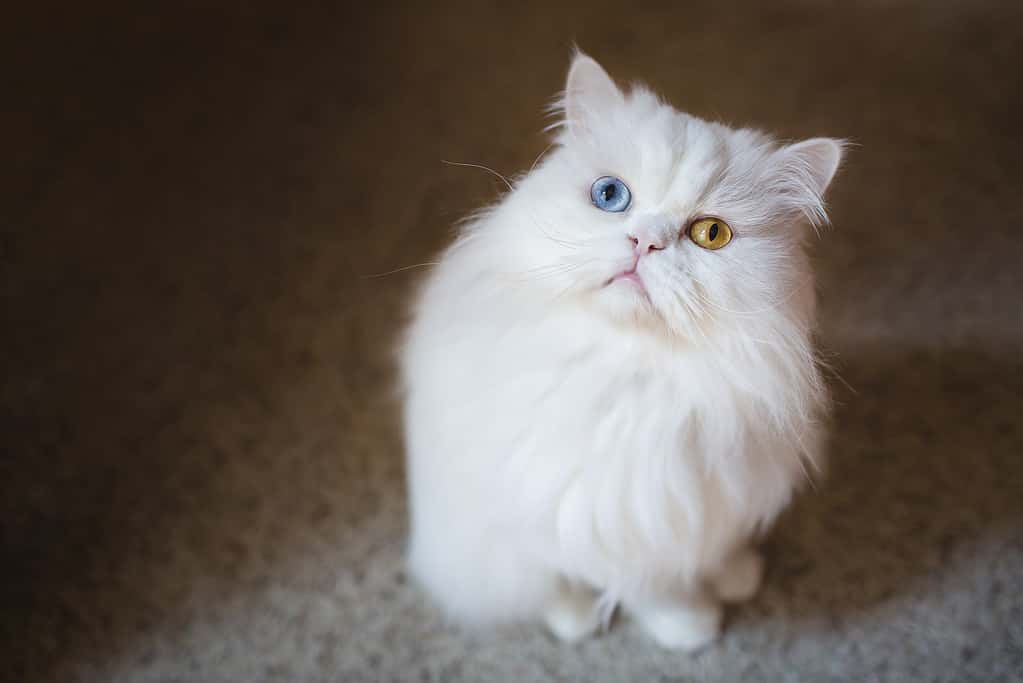
The Persian cat is a long-haired breed with dozens of officially recognized coat varieties.
©dianewphoto/iStock via Getty Images
The Persian breed standard lists odd-eyed standards for white, calico, and bi-color coats as follows:
- Odd-eyed whites: “one blue and one copper eye with equal color depth.”
- Odd-eyed calico and bi-color: “one blue and one green, hazel or brilliant copper eye [varies with specific coat color] with equal color depth.”
Khao Manee
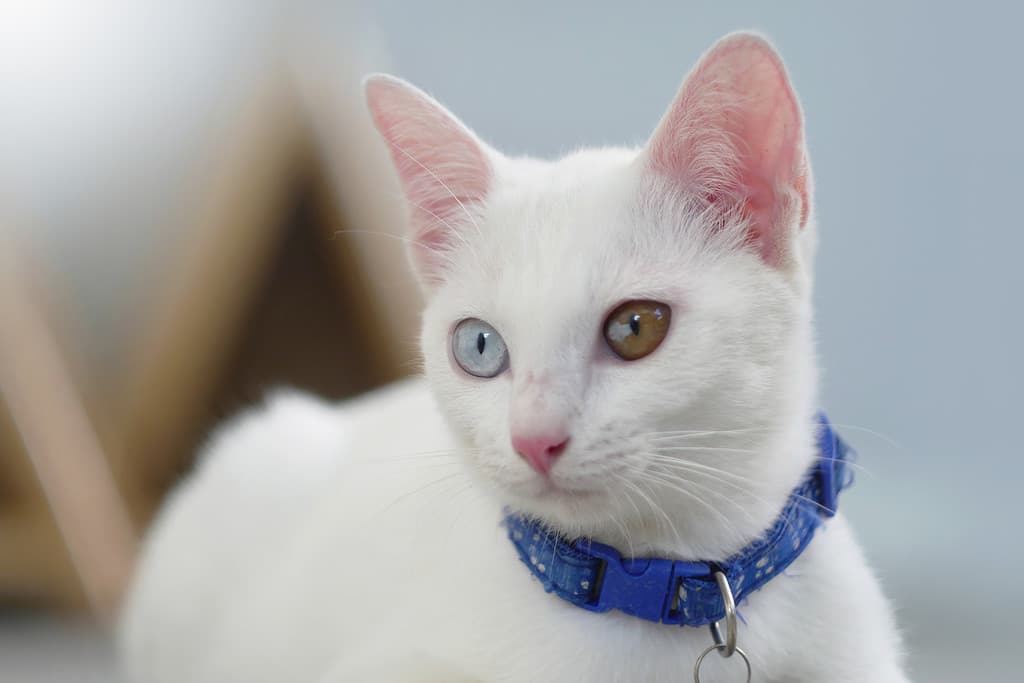
The Khao Manee is an ancient, natural breed originating from Thailand.
©ApisitWilaijit/iStock via Getty Images
Breeders call the Khao Manee the “Diamond Eye Cat” for the jewel-like quality of its eyes. In fact, the Khao Manee breed standard specifies “brilliant, clear and vivid, the eye color should resemble that of precious gemstones.” The standard also describes eye colors of various shades of blue, yellow, and green, with “allowance and appreciation for multiple colors or shades between eyes or within an eye,” a recognition that incomplete heterochromia is seen in this breed more than any other.
Conclusion
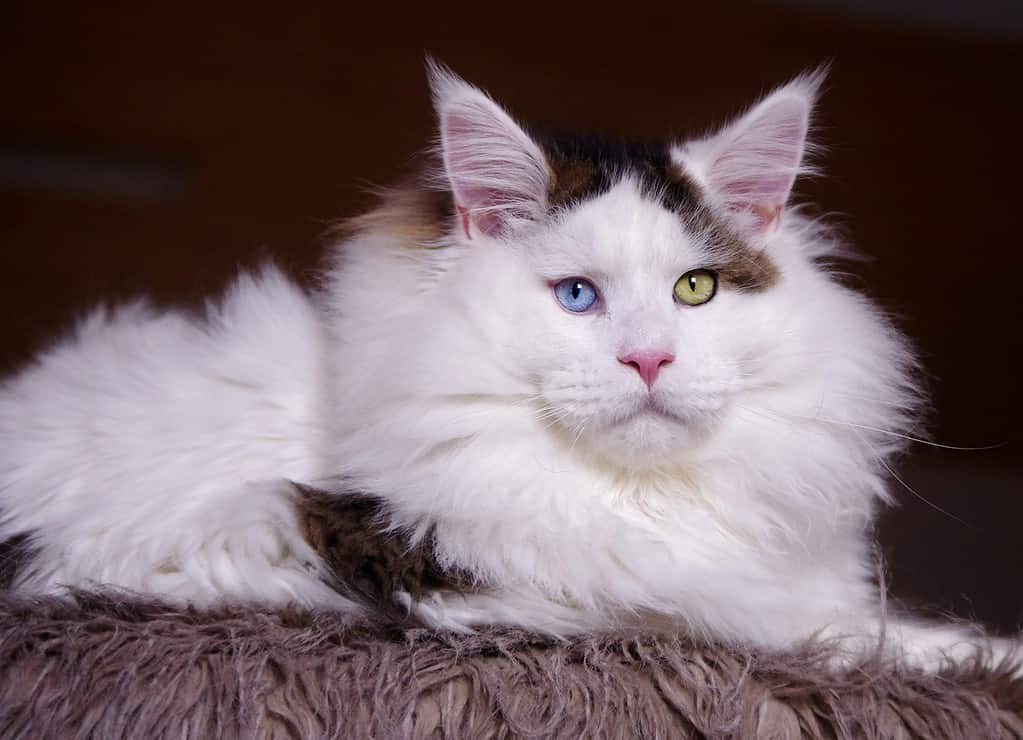
The Maine Coon Cat is yet another breed where the breed standard recognizes the possibility of odd-eyed individuals.
©Alixia Pain-Brun / CC BY-SA 4.0 – License
“Odd-eyed cat” is a term given to any cat with two different eye colors. This condition is known as heterochromia iridium, often just called heterochromia for short. Heterochromia can be complete (two different colored eyes) or incomplete (sectoral or centralized within one or both eyes). Heterochromia is usually caused by inherited genes or genetic mutations but can also develop after disease or injury. Any cat breed of any coat color can potentially have heterochromia. However, cats with all-white or bicolor white coats are more likely to have it, as are cats of certain breeds, including the Van, Turkish Van, Turkish Angora, Persian, and Khao Manee.
The photo featured at the top of this post is © Sheila Fitzgerald/Shutterstock.com
Thank you for reading! Have some feedback for us? Contact the AZ Animals editorial team.




